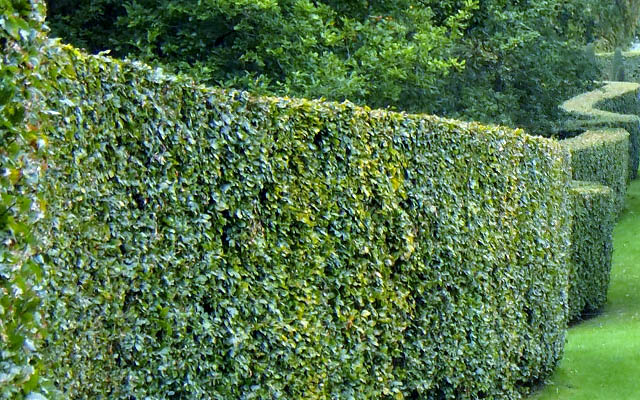How to plant a hedge
Alan Titchmarsh talks about the wonders of hedges.


Blow, winds, and crack your cheeks!’ incanted Shakespeare’s King Lear. And when said winds do so, I am reminded of the value of hedging and its ability to filter wind and provide shelter as, indeed, did the field hedgerows that were once ubiquitous in our countryside. And although many of us bemoan the wholesale tearing up of those beautiful and useful field boundaries, we could all do our bit to reinstate those most valuable of wildlife corridors and the most handsome and harmonious of property boundaries.
Buying pot-grown hedging plants that can be planted at any time of year is an expensive business, but you’ll be astonished at how inexpensive it is to plant bare-root youngsters at any time between November and March when they’re dormant and bare of leaf. A good local nursery will most likely have bundles of them for sale at this time of year, but, otherwise, specialist suppliers of hedging plants can easily be found online. Each plant will cost about 60p if you buy them small and young, as ‘whips’; even less when buying in bulk.
Of course, patience is required and if you need an instant and secure boundary, then a whippy, knee-high collection of bare shoots is not much of a barrier. But, if planted on one side of a post-and-wire fence, it will, in fewer years than you can imagine, become the hedge you dreamed of when you planted it.
Choose species carefully. The Leyland cypress saga needs no repetition here (except to say that, when clipped at least once a year, and stopped at the required height, it makes a dense boundary that can be mistaken for yew at a distance of 20 yards). Beech and hornbeam hedges are always handsome, but it’s the wilder, more natural kind of hedge I’m concerned with here the kind that can be planted to surround a country garden or field, or an urban garden where wildlife is valued. A mixture consisting of field maple, hawthorn, blackthorn, sweet briar, dogwood and spindle tree is my recipe of choice, with the occasional holly and honeysuckle added to leaven the mix.
When planting, take out a trench 18in wide and 8in deep along the run of the hedge it always pays to work some muck or garden compost into the bottom. Mix the plants up randomly and plant them about 12in apart, staggering them to make a double row. Backfill and firm the soil around them and lay a soaker (trickle) hose along the entire run that you can attach to a hose and tap at one end.
The earth may be damp enough now, but the concentration of plants will suck out moisture with increasing rapidity come the first warm days of spring and lugging a can or a hosepipe will rapidly turn into slave labour. It’s always a good idea to trim the tops of the shoots in winter, even before the plants achieve the required height, as this encourages bushiness and thickening up of the base.
Annual trimming in winter in January or February will offer the minimum of disruption to birds seeking nesting sites. Once a pruning programme is under way, it usually pays to aim for sides that slope outwards towards the bottom, to offer stability during heavy snowfall.
Exquisite houses, the beauty of Nature, and how to get the most from your life, straight to your inbox.
There is a tremendous sense of satisfaction to be gained from planting a country hedge knowing that you’re doing your bit for birds, mammals and insects, as well as improving your own outlook. And the wind can crack its cheeks as much as it likes your boundary, at least, will be immovable and enduring.
Country Life is unlike any other magazine: the only glossy weekly on the newsstand and the only magazine that has been guest-edited by His Majesty The King not once, but twice. It is a celebration of modern rural life and all its diverse joys and pleasures — that was first published in Queen Victoria's Diamond Jubilee year. Our eclectic mixture of witty and informative content — from the most up-to-date property news and commentary and a coveted glimpse inside some of the UK's best houses and gardens, to gardening, the arts and interior design, written by experts in their field — still cannot be found in print or online, anywhere else.
